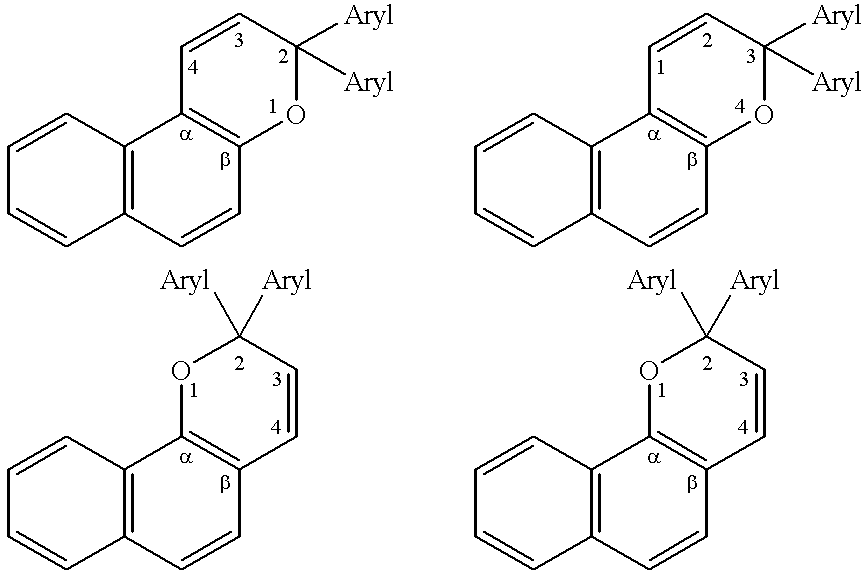Diaryl-2H-naphthopyrans
a technology of diaryl-2hnaphthopyrans and diaryl-2hnaphthopyrans, which is applied in the field of diaryl-2hnaphthopyrans, can solve the problems of pyran longevity and/or migration properties, uninteresting compounds, and inability to be used in instruments
- Summary
- Abstract
- Description
- Claims
- Application Information
AI Technical Summary
Benefits of technology
Problems solved by technology
Method used
Image
Examples
Embodiment Construction
The object of the present invention is to provide substances, which dye photochromically well at room temperature, lighten up quickly enough for ophthalmic lenses, possess sufficient longevity and due to their spatial structure have less tendency to migrate than the compounds known from the state of the art, and to describe the synthesis of these substances.
An invented solution to this object is set forth in claims 1 and 2.
Further improvements of the present invention are the subject matter of the dependent claims.
The subject matter of the present invention are therefore photochromic compounds having a diaryl-naphthopyran-structure, which possesses an advantageous substitution at its aryl substituents.
On the one hand, this substitution of the aryl substituents comprises linking the naphthopyran-structure to the first starting compound described in claim 2 under a) by means of the invented process, with which `monomeric` diaryl-naphthopyrans which possess one photochromically reactin...
PUM
| Property | Measurement | Unit |
|---|---|---|
| temperatures | aaaaa | aaaaa |
| melting point | aaaaa | aaaaa |
| temperature | aaaaa | aaaaa |
Abstract
Description
Claims
Application Information
 Login to View More
Login to View More - R&D
- Intellectual Property
- Life Sciences
- Materials
- Tech Scout
- Unparalleled Data Quality
- Higher Quality Content
- 60% Fewer Hallucinations
Browse by: Latest US Patents, China's latest patents, Technical Efficacy Thesaurus, Application Domain, Technology Topic, Popular Technical Reports.
© 2025 PatSnap. All rights reserved.Legal|Privacy policy|Modern Slavery Act Transparency Statement|Sitemap|About US| Contact US: help@patsnap.com



